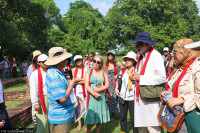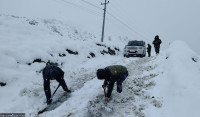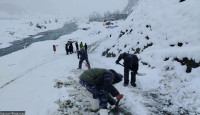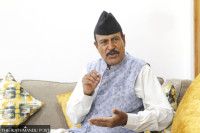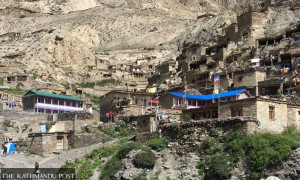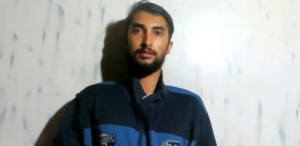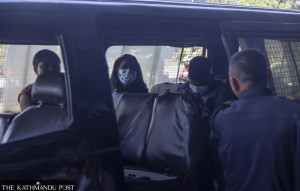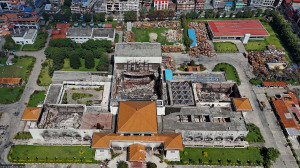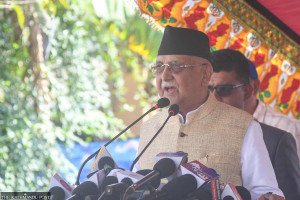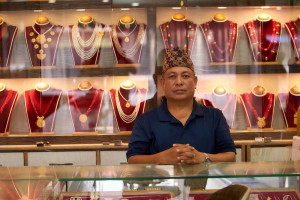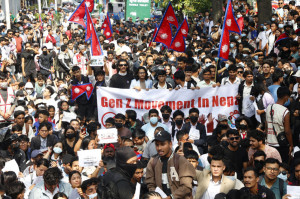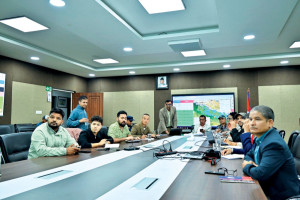National
Lack of supervision makes swimming pools unsafe
According to police data, five people have died in Nepal in swimming pools in the past four years.
Anup Ojha
On June 24, a 19-year-old-boy drowned in a swimming pool owned by Subhashree Banquet in Kadaghari of Kageshwari Manohara Municipality.
The boy had been to the Blue Haven swimming pool along with his friends to beat the rising heat in Kathmandu.
Police named the victim as Pravash Adhikari of Kageshwari Manohara-6. The teenager is learnt to have drowned in six feet depth at around 3pm.
Inspector Nabin Marasaini of Metropolitan Police Circle, New Baneshwar said that they are looking into the case. The post-mortem report of the boy is yet to come from the Maharajgunj-based Tribhuvan University Teaching Hospital, where his body has been kept.
According to Inspector Pusparaj Thapa, who is on the local police beat in Kadaghari, initial finding showed that the boy breathed his last at Civil Service Hospital, New Baneshwar.
Pawan Susling, 31, was also swimming in the pool when the boy was taken out of water. “Now, I fear going to the swimming pools,” said Gurung, a professional cinematographer who goes swimming at the weekend.
Susling said on that day of the incident, the pool was overcrowded.
Inspector Thapa told the Post that he and his family had reached the pool with the intent to swim since it was a Saturday. However, when he saw a big crowd, he had returned without taking a dip in the pool.
Balaram Thapa, one of the owners of Blue Heaven, told the Post that he had deployed four lifeguards to watch over swimmers. Perhaps the four were not enough to protect such a high number of people, he admitted.
“As the boy died in our pool, we have to admit that it was our mistake,” said Thapa. “But when we looked at the CCTV footage, the boy had been there since 11 am that day, and he drowned at 3 pm.” Since the incident, the pool has been restricted to the public.
The family of the deceased, however, has not said anything openly. Inspector Thapa said they may have kept their silence as they are mourning him and still waiting to perform the funeral rites.
On June 10, a ten-year-old boy of Pokhara-8 drowned in the swimming pool operated by Mohan Dutta Pokharel of Batulechaur on the outskirts of the metropolis.
According to the Kaski District Police Office, the boy and his parents had gone to the pool to beat the heat.
In September 2021, a 16-year-old-boy drowned in the swimming pool of Sherpa Party Palace in Jorpati.
As per a report from the Nepal Police Headquarters, in the past four years, five persons drowned in swimming pools.
“This is tragic,” said Ashok Bajracharya, president of the Nepal Swimming Association. “This is happening in the absence of strict monitoring from the government side.”
According to Nepal Swimming Association (NSA)’s estimates, there are around 250 swimming pools across the country with the Kathmandu Valley alone having 80 privately-owned swimming pools. According to NSA officials, only two swimming pools—one at Satdobato and the other in Nepalgunj—are government-owned.
Amid soaring temperatures, especially when it had not been raining much, many people opted for swimming pools to get relief, apart from those who swim regularly for an excercise. In Kathmandu Valley, where rivers are polluted, swimming is possible only in artificial pools.
However, in the absence of guidelines to operate such facilities and a body authorised to oversee safety measures, swimming pools have become dangerous for children and amateur swimmers. The pools aren’t monitored for hygiene either.
It’s good news that more swimming pools are being built and they can promote swimming culture in cities, but many are not attended by persons trained to ensure the safety of lives, said NSA president Bajracharya. “There is nobody to watch whether they are being run beyond their capacity.”
People are drowning because many of the swimming pools are being operated without proper and adequate lifeguards, and they are overcrowded, he added.
Meanwhile, there isn’t any agency authorised to check the quality of water in the swimming pools, with many operators using more than required amounts of chlorine to keep the water clean.
Dermatologists say excessive chlorine in water can cause red eyes, itchy skin and dry hair. It also triggers respiratory issues sometimes.
“Many patients come to me with itchy skin, dry hair and sunburn cases, caused largely by polluted water in the swimming pools,” said Dr Suman Nepal, consultant dermatologist and hair transplant surgeon at Norvic Hospital. “Compared to last summer, their numbers have increased.”
When the Post contacted local government officials who have the jurisdiction over swimming pools, they said they give permission to open swimming pools and issue building certificates. But they do not monitor their operation, also because there were no guidelines.
“We thought the pools were self-regulated. The incident of Kadaghari has opened our eyes,” said Upendra Karki, the mayor of Kageshwari Manohara. He said there are half a dozen swimming pools run commercially in the municipality but the local unit was not monitoring their safety. “Now we are serious about giving them operating guidelines as no one should die this way,” said Karki.
Meanwhile, Kathmandu metropolis spokesperson Nabin Manandhar said he was not aware of the KMC taking a lead in the issue.
“This is a serious issue. I will raise this issue in our meeting,” said Manandhar.




 15.12°C Kathmandu
15.12°C Kathmandu.jpg)

